Revisiting Consistency for Semi-Supervised Semantic Segmentation
Dense Semantic Forecasting with Multi-Level Feature Warping
Automatic universal taxonomies for multi-domain semantic segmentation
Applications of generative approaches for artificial intelligence
Dense open-set recognition based on training with noisy negative images
DenseHybrid: Hybrid Anomaly Detection for Dense Open-Set Recognition
The chirality of the mitotic spindle provides a mechanical response to forces and depends on microtubule motors and augmin
Multi-domain semantic segmentation with overlapping labels
Center of Excellence for Computer Vision
Dense Semantic Forecasting in Video by Joint Regression of Features and Feature Motion
Densely connected normalizing flows
Elements of Learning Algorithms for Natural Scene Understanding
A baseline for semi-supervised learning of efficient semantic segmentation models
Efficient semantic segmentation with pyramidal fusion
Dense open-set recognition with synthetic outliers generated by Real NVP
Traffic Scene Classification on a Representation Budget
Efficient Ladder-Style DenseNets for Semantic Segmentation of Large Images
Warp to the Future: Joint Forecasting of Features and Feature Motion
Perceptual Autoencoder for Compressive Sensing Image Reconstruction
Multi-domain semantic segmentation with pyramidal fusion
Multi-Task Learning for iRAP Attribute Classification and Road Safety Assessment
Multimodal semantic forecasting based on conditional generation of future features
Convolutional models for image understanding
Lightweight convolutional models for real-time dense prediction and forecasting
Pedestrian Tracking by Probabilistic Data Association and Correspondence Embeddings
Simultaneous Semantic Segmentation and Outlier Detection in Presence of Domain Shift
In Defense of Pre-Trained ImageNet Architectures for Real-Time Semantic Segmentation of Road-Driving Images
Single Level Feature-to-Feature Forecasting with Deformable Convolutions
Natural image understanding: principles, challenges and research outlook
Convolutional Models for Segmentation and Localization
Sparse weakly supervised models for object localization in road environment
Ladder-style DenseNets for Semantic Segmentation of Large Natural Images
Python for the curious
Convolutional Scale Invariance for Semantic Segmentation
Weakly-Supervised Semantic Segmentation by Redistributing Region Scores Back to the Pixels
Patch-level Spatial Layout for Classification and Weakly Supervised Localization
Improving the Egomotion Estimation by Correcting the Calibration Bias
Weakly Supervised Object Localization with Large Fisher Vectors
Weakly Supervised Object Localization, Fisher Vectors, Sparse Classification Models.
Robust Traffic Scene Recognition with a Limited Descriptor Length
Fast Approximate GMM Soft-Assign for Fine-Grained Image Classification with Large Fisher Vectors
Exploiting temporal and spatial constraints in traffic sign detection from a moving vehicle
Temporal Ensemble of Shape Functions
Image Representations on a Budget: Traffic Scene Classification in a Restricted Bandwidth Scenario
Multi-Label Classification of Traffic Scenes
Recognizing 3D Objects from a Limited Number of Views using Temporal Ensembles of Shape Functions
Experimental Evaluation of Vehicle Detection Based on Background Modelling in Daytime and Night-Time Video
Convolutional Neural Networks for Croatian Traffic Signs Recognition
Classifying Traffic Scenes Using The GIST Image Descriptor
A Novel Georeferenced Dataset for Stereo Visual Odometry
Combining Spatio-Temporal Appearance Descriptors and Optical Flow for Human Action Recognition in Video Data
Multiclass Road Sign Detection using Multiplicative Kernel
Towards Space-Time Semantics in Two Frames
Estimating OD matrices at intersections in airborne video - a pilot study
Sliding Window Object Detection without Spatial Clustering of Raw Detection Responses
Addressing false alarms and localization inaccuracy in traffic sign detection and recognition
Experimental Evaluation of Autonomous Driving Based on Visual Memory and Image Based Visual Servoing
Histogram-Based Description of Local Space-Time Appearance
Preliminary experiments in multi-view video stitching
Detecting and recognizing centerlines as parabolic sections of the steerable filter response
Using GPS positioning to recover a comprehensive road appearance mosaic
Recent advances in traffic sign detection
Streamlining collection of training samples for object detection and classification in video
Recovering a comprehensive road appearance mosaic from video
Generative modeling of spatio-temporal traffic sign trajectories
A computer vision assisted geoinformation inventory for traffic infrastructure
A mapping and localization framework for scalable appearance-based navigation
Traffic sign detection as a component of an automated traffic infrastructure inventory system
Towards automatic assessment and mapping of traffic infrastructure by adding vision capabilities to a geoinformation inventory
Online/Realtime Structure and Motion for General Camera Models
Performance evaluation of the five-point relative pose with emphasis on planar scenes
Influence of the numerical conditioning to the accuracy of relative orientation
Large scale vision based navigation without an accurate global reconstruction
A Framework for Scalable Vision-Only Navigation
Outdoor Visual Path Following Experiments
Experimental evaluation of an urban visual path following framework
Enhancing the Point Feature Tracker by Adaptive Modelling of the Feature Support
A Multimodal Image Registration Technique for Structured Polygonal Scenes
Multi-agent Object Tracking by Active Vision
Real-time Active Visual Tracking System
A Software Architecture for Distributed Visual Tracking in a Global Vision Localization System
Detecting Salient Curvature Features Using the Local Control of the Feature Support
Determining the absolute orientation in a corridor using projective geometry and active vision
Extracting the Canonical Set of Closed Contours Using the Best-First Search Algorithm
Using Projective Geometry and Active Vision for Scene Interpretation
Locally adaptive thresholding of the sequence of image frames
A Software Architecture for Image Acquisition and Camera Control in an Active Vision System
Real Time Segmentation by Using Locally Adaptive Dynamic thresholding
Using vanishing points for purposive adjustment of viewing direction
Self-localisation procedure for autonomous navigation through corridors
Robust Extraction of Line Segments from Colour Images by an Iterative Weighted Polarised Hough Transform
Teaching
University undergraduate
- Computer Architecture 2 (Lecturer in charge, Lecturer in charge)
- Computer Architecture 2 (Lecturer in charge)
- Design Patterns (Lecturer in charge, Lecturer in charge)
- Design Patterns (Lecturer in charge)
- Scripting Languages (Lecturer in charge)
- Scripting Languages (Lecturer in charge)
- BSc Thesis (Lectures)
- BSc Thesis (Lectures)
- Final BSc Thesis (Lectures)
- Project C (Lectures)
- Software Design Project (Lectures)
- Software Design Project (Lectures)
- Software Design Project (Lectures)
University graduate
- Computer Vision (Lecturer in charge)
- Deep Learning 1 (Lecturer in charge)
- Deep Learning 1 (Lecturer in charge)
- High-Level Abstraction Programming (Lecturer in charge)
- Three-Dimensional Computer Vision (Lecturer in charge)
- Graduation Thesis (Lectures)
- Project (Lectures)
- Project (Lectures)
- Project (Lectures)
- Project (Lectures)
- Research Seminar (Lectures)
- Seminar 1 (Lectures)
- Seminar 2 (Lectures)
Postgraduate doctoral study programme
- Dynamic Scene Analysis (Lecturer in charge)
- Models for representing images and video (Lecturer in charge)
Competences
-
Computational and artificial intelligence
Artificial intelligence Cognitive systems Autonomous systems Learning (artificial intelligence) Distance learning Semisupervised learning Supervised learning Machine learning Probabilistic logic Machine intelligence Pattern analysis -
Computational and artificial intelligence
Artificial intelligence Cognitive systems Autonomous systems Learning (artificial intelligence) Distance learning Semisupervised learning Supervised learning Machine learning Probabilistic logic Machine intelligence Pattern analysis


 Pristupačnost
Pristupačnost